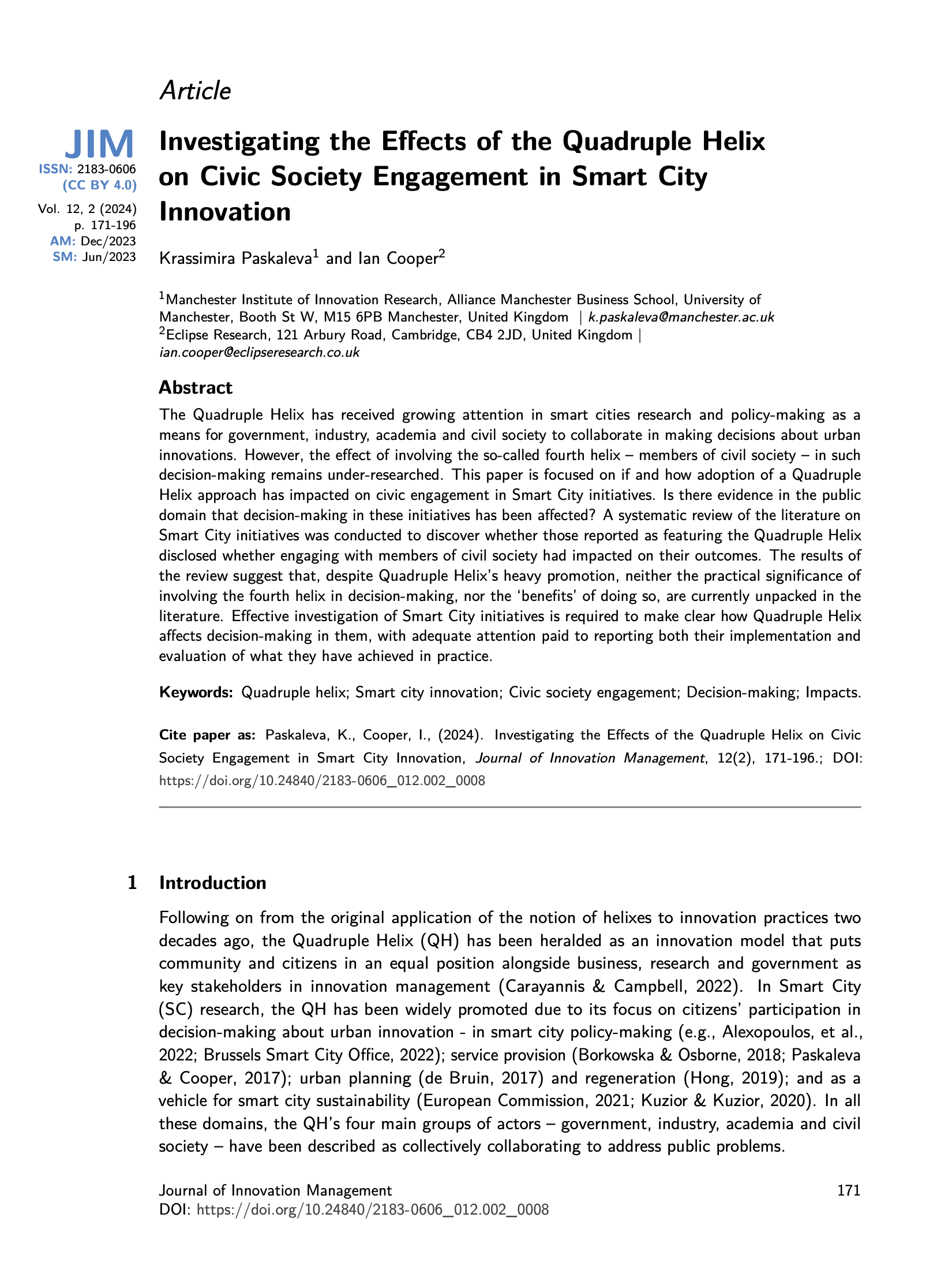Investigating the Effects of the Quadruple Helix on Civic Society Engagement in Smart City Innovation
Main Article Content
Abstract
This paper is focused on the Quadruple Helix (QH) impacts on civic engagement in urban innovations. The main research question addressed is whether there is evidence available in the public domain that use of quadruple helix has increased the involvement of members of civil society in decision-making in smart cities initiatives (SCIs). Due to its rising popularity as a practical innovation model, QH – where government, industry, academia and civil society collaborate to collectively address public problems - has received growing attention in smart cities research and policy making. But despite this, the actual effects of involving the fourth helix – members of civil society – remains an under-researched area. It has yet to be demonstrated what, in practice, SCIs operating under the banner of QH have accomplished, especially for improving the engagement of civil society (CS) members in decision-making about smart city (SC) innovations. A broadly based systematic review of the literature on QH in SCIs has been conducted to discover whether those featuring QH report that successful engagement of members of civil society has affected innovation outcomes. Results suggests that despite its heavy promotion, neither the practical significance of involving the fourth helix in decision-making in SCIs, nor the ‘benefits’ delivered from doing so, are currently unpacked in the literature. This is only partly due to the dearth of published evidence about these issues. The lack of reported effects of the quadruple helix on civic engagement in smart city initiatives is compounded by the inadequate research design adopted for such initiatives, especially by the insufficient attention given to reporting on their implementation or to evaluations of what they have achieved in practice.
Article Details
Authors who publish with this journal agree to the following terms:
- Authors retain copyright and grant the journal right of first publication with the work simultaneously licensed under a Creative Commons Attribution License that allows others to share the work with an acknowledgement of the work's authorship and initial publication in this journal.
- Authors are able to enter into separate, additional contractual arrangements for the non-exclusive distribution of the journal's published version of the work (e.g., post it to an institutional repository or publish it in a book), with an acknowledgement of its initial publication in this journal.
- Authors are permitted and encouraged to post their work online (e.g., in institutional repositories or on their website) prior to and during the submission process, as it can lead to productive exchanges, as well as earlier and greater citation of published work (See The Effect of Open Access).

